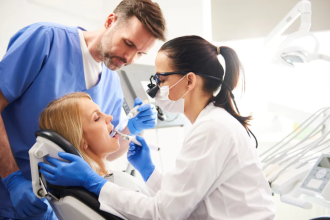Imagine being able to pluck out a single cell from a tissue sample, as precisely as if you were removing a single thread from a delicate fabric. This isn’t a scene from a futuristic sci-fi movie; it’s the reality of Laser Capture Microdissection (LCM) technology – and it’s breaking boundaries in molecular analysis like never before. With the advent of AI-assisted platforms provided by https://www.targetedbioscience.com/, LCM profilers are reaching new heights, fine-tuning the art of isolating individual cells for the most detailed molecular studies. In this blog post, we’re dissecting the implications of these LCM advances on biotechnological research and the revolutions they are set to bring to the field of molecular biology.
Navigating the Microscopic Chaos with Laser Precision
When you’re dealing with cellular investigation, precision is everything. Traditional methods often involve dissections at the mercy of human hands, where the naked eye and handheld tools are the main operatives. Laser Capture Microdissection, in contrast, leverages a laser beam to isolate the target cell, ensuring that the surrounding cells and tissues remain intact.
The Core Components of LCM
UV Laser Technology: The crux of the LCM is being able to fire a tightly focused laser beam on the desired cells. This goes beyond mere accuracy; it’s an art, and like any good art, it requires the perfect blend of science and technology.
Capture Mechanism: Once the laser does its job, the ‘captors’, through which the laser has carved its path, seal the deal. Imagine a molecular vacuum cleaner, delicately collecting the dissected cells with suction that’s not too strong and not too weak.
AI in LCM: Bringing Thought to Precision
Artificial intelligence is revolutionizing every industry it touches, and molecular biology isn’t an exception. By using computer vision and machine learning, AI is turning LCM from a precision tool into a smart one. These AI-assisted platforms can learn to recognize cell types and patterns at speeds and depths that the human eye can’t even perceive.
The Brain Behind the Beam
Computer Vision: AI platforms process the information from the laser capture in real-time, understanding the cellular landscape and adjusting the dissection process accordingly.
Machine Learning: Over time, these systems learn from each dissection. Did the operator need to readjust the laser slightly to capture a type II pneumocyte in the alveoli of the lung? The AI will remember for next time.
The Biological Impact: From Macro Insights to Micro Actions
The application of AI in LCM technology has profound effects on biology research. By pioneering this blend of technology and precision, researchers are not only dissecting single cells but also developing an unprecedented level of understanding of cellular ecosystems.
Reconstructing the Cellular World
Identification of Rare Cells: With LCMs honed by AI, researchers can isolate and study cells that are rare within complex tissue samples — think cancer cells isolated from tumorous tissues, or neural cells from regions of the brain.
Studying Cell-to-Cell Interactions: Molecular research is now venturing into the intricate world of cellular communication, studying the molecules exchanged between isolated cells, which could hold the keys to diseases and their treatments.
Biobanking and Genomic Analysis: AI-equipped LCMs are also enhancing biobanking processes, ensuring high-quality samples for future genetic analysis, with less contamination and more accuracy than was previously possible.
Challenges on the Horizon
Despite the promising future that AI-assisted LCM profilers suggest, it is crucial to acknowledge and address the challenges they also bring.
Ethical Considerations
Data Security: The sensitive nature of genomic data harvested from LCM dissections warrants airtight security protocols to prevent exploitation, misuse, or accidental exposure.
Informed Consent: The shift towards studying individual cells places new perspectives on the necessity for informed consent, considering the granularity of the information gathered.
Technological Barriers
Cost and Accessibility: Cutting-edge AI platforms can be prohibitively expensive for many researchers or institutions, potentially creating disparities in the capabilities of different laboratories.
Training and Implementation: The integration and training required for AI systems in LCM platforms need to be thorough and accessible. Researchers must understand and wield these tools effectively without becoming overly dependent on them, losing the hands-on skill that has long been the hallmark of the trade.
In conclusion, Laser Capture Microdissection Profilers enhanced by AI stand at the nexus of technology and molecular biology, with the potential to rewrite the narrative of cellular research. It is an exciting time for the biotechnological community, filled with both possibilities and responsibilities. The delicate dance of precision, technology, and ethics will be one to watch, as we venture into the minuscule world of cellular life with an accuracy never before achievable.














